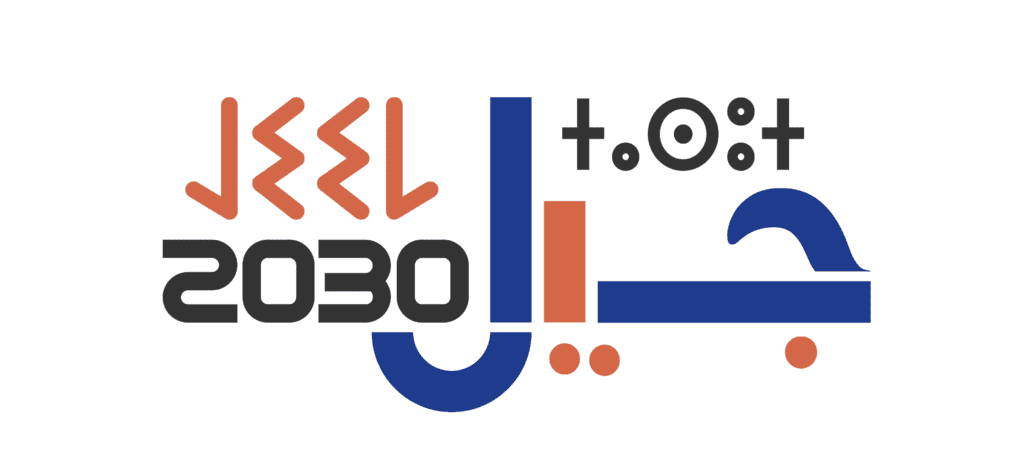Youth in Public Policies: The Constant and the Changing
By: Hicham Tarshi

The development model, tied to strengthening state institutions, the separation of powers, embedding a culture of human rights, establishing social justice, and accelerating investments for comprehensive growth, has undergone significant evolution. This process was initiated by Morocco through its executive and legislative branches, as well as representative institutions and councils, supported by governance and oversight bodies.
At every stage, this advancement requires competent professionals to implement its objectives. This challenges social mediation institutions, particularly political parties, as institutional mechanisms shaped by electoral processes. These parties are tasked with formulating and executing public policies through the executive branch (the government) or elected councils at regional, provincial, and local levels. These institutions must demonstrate their ability to integrate this structural challenge into their political projects, acknowledging their historical role as reservoirs of professionals mobilized by the state to design and implement reforms.
Youth in Public Policies: Demographic Insights
To analyze the evolution of public policies targeting youth, it is useful to examine the data published by the High Commission for Planning in a study dated July 12, 2023, on the occasion of World Youth Day. The study revealed that the total youth population aged 15–34 increased from 11.5 million in 2014 to 11.8 million in 2023. The 15–24 age group rose from 16.1% to 18.0% of the total youth population over the same period, while the proportion of urban youth grew from 60.0% to 66.0%.
These figures highlight Morocco’s demographic structure, characterized by a substantial youth base. This places the youth at the forefront of state institutional concerns, particularly within the royal institution. King Mohammed VI has consistently emphasized the importance of youth in achieving a new revolution by overcoming challenges and advancing the construction of a modern Morocco.
Royal Vision: A Roadmap for Empowering Youth
The King’s first address to the nation on July 30, 1999, served as a genuine roadmap for a social contract between the monarchy and the people. It provided clear guidelines on the importance of delivering quality education and appropriate training to enable Moroccan youth to tackle 21st-century challenges and seize employment opportunities in a constantly evolving world.
Subsequent royal speeches on various national occasions, as well as messages addressed to participants in national, regional, international, and UN events, have reiterated King Mohammed VI’s prioritization of youth. These directives underscore the need to equip young people with the tools necessary to foster hope and confidence in the future while encouraging them to engage actively and responsibly in public life. In doing so, youth can contribute to the country’s reforms and development projects.
The royal speech delivered by His Majesty King Mohammed VI on the 15th anniversary of his accession to the throne, on July 30, 2014, reflects a long-term strategic vision aimed at strengthening human and social development in Morocco. The King’s request for a study to measure Morocco’s overall value between 1999 and 2013 sought not only to highlight the importance of intangible capital but also to ensure an equitable distribution of national wealth, allowing all Moroccans, particularly youth, to live in decent conditions.
This commitment to youth was also evident in the speech delivered on October 13, 2017, at the opening of the legislative session. In this address, the King emphasized the importance of “linking responsibility to accountability,” acknowledging that Morocco’s progress had not yet benefited all segments of society, especially the youth, who represent over a third of the population. The speech also highlighted the urgency of establishing the Consultative Council for Youth and Associative Action, which has still not been created.
Policies and Programs for Youth
The royal attention was not limited to statements but was translated into concrete policies and programs, such as the National Initiative for Human Development and sectorial reforms, which place youth at the heart of their priorities. However, the government’s management in this area has been marked by shortcomings, including the fragmentation of youth-related responsibilities across several ministries, the lack of an integrated vision to manage these issues, and delays in updating the national integrated youth strategy.
Despite these obstacles, the current government, which emerged from the October 2021 elections, has committed to implementing the new development model’s guidelines, with a particular focus on youth. Initiatives launched include the “Awrach” and “Forsa” programs, the renewal of the “Intelaka” program, and the “Youth Passport” designed to facilitate youth access to public services. Additionally, the government is working to support startups, modernize the legal framework of the educational system, and launch sports and cultural projects tailored to the aspirations of young people.
Strengthening Youth Participation
In the face of accelerating technological transformations and globalization, Moroccan youth remain a crucial human resource that requires special attention and real integration into political and economic decision-making processes. In this context, strengthening the presence of young people in the next government appears to be a critical step toward ensuring better inclusion of this group in national development projects. It is recommended to restructure the government to unify youth-related sectors into a single entity while allocating sufficient financial resources to implement associated programs. This would solidify a development path in which youth play a central role as agents of positive change.
